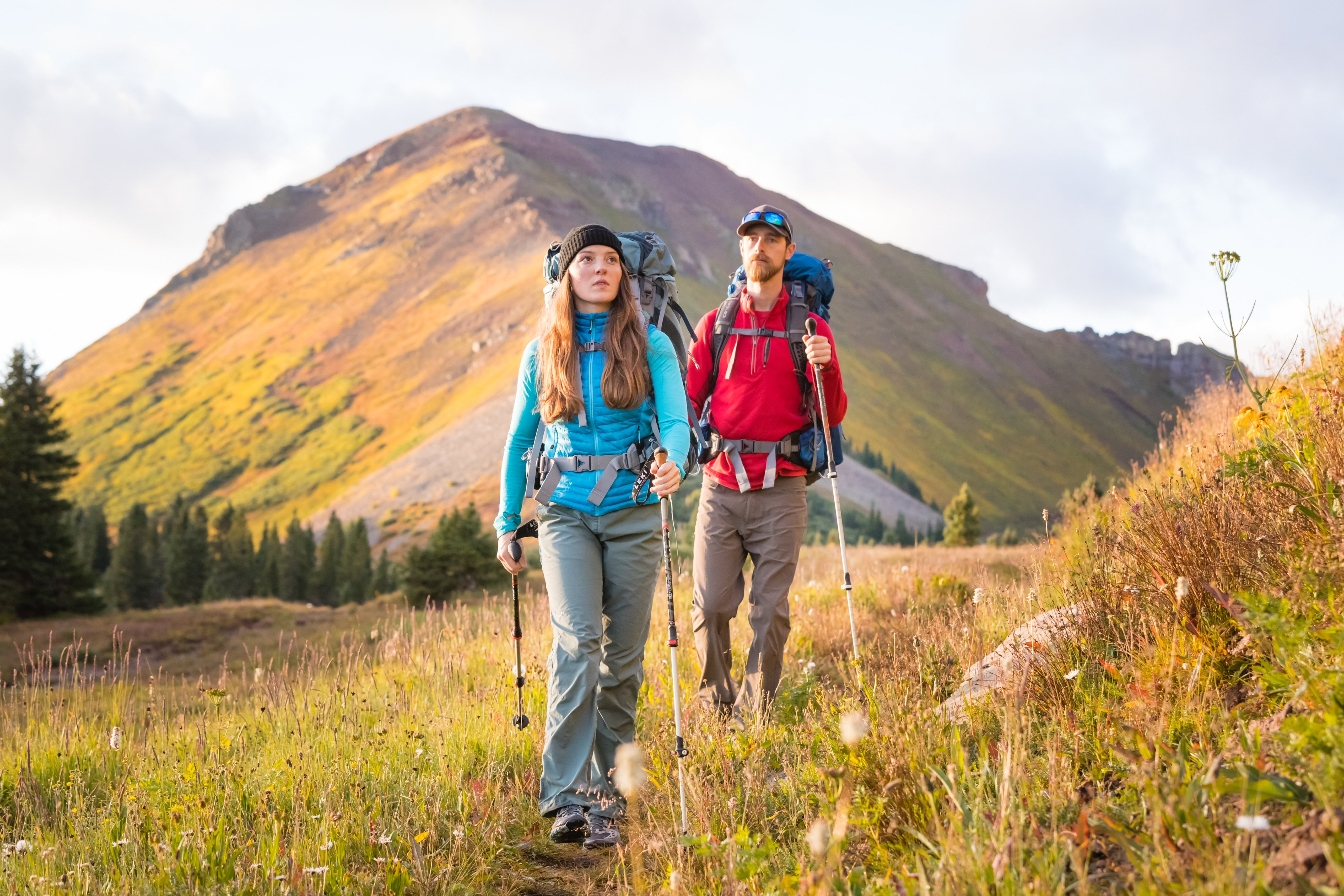By: Bart Beck
As we welcome March and spring slowly approaches, we’re beginning to see that seasonal shift that is bringing warmer weather. Even though the trails in central Pennsylvania are thoroughly soaked and muddy, if you’re like me, you’re itching to get a backpack on and head out into the forest. To make the most of that trip, one thing that you’ll want to do is ensure that your pack is properly fitted.
Whether you’ve shopped for packs before or you’re new to the whole experience, you’ve probably noticed that the same pack will often come in a range of sizes. They range from extra-smalls to extra-larges and many combinations in between, depending on the pack and the brand. You’ll even find some highly adjustable packs, such as Deuter’s backpacks that only come in one size. Selecting the correct one could mean the difference between a painful and a pleasurable experience.
So, what’s the difference? We know that we are all made differently, and when it comes to packs, the most important difference is our torso length. Having a pack that fits onto your back will distribute and secure the weight of your load properly. A pack that is too small may force too much weight into the shoulders, whereas a pack that is too large may not properly secure the load in the most efficient way.
You may be saying to yourself, “well, I’m not too sure of my torso length, but I’m tall, so I need a large pack.” If you fall for this train of thought, you may be sorely disappointed. Unlike height, torso length does not vary nearly as much or as often; a difference in height can often be attributed to leg length rather than torso length. This means that a person who is 5’6” and a person who is 6’1” could potentially have the same torso length.
Now that you know the importance of torso length, we can get into how to properly measure it. When it comes to fitting a backpack, torso length is the measurement along the spine from the top of the iliac crest up to the c7 vertebrae (see image below). To give a little context, the iliac crest is the top of the hip bone and the c7 vertebrae can be found by looking at your feet and feeling for the part of the spine that protrudes out of the back of the neck. Although, you could find this length at home, the easiest and most accurate way to do this is by taking a trip to your local gear shop. Any gear shop that specializes in backpacking should have a device that fits onto your back just like a backpack and gets an accurate measurement of your torso. Once you have this measured, you can start finding the correct pack.
Every pack and pack company may be slightly different, so don’t trust that because you wear a medium in a pack from The North Face, you’ll wear a medium in an Osprey. With all of that in mind, take a little time to look up the sizing chart for the pack that you’re interested in, or talk to your local pack guru about the best fit. Once you narrow it down to a pack or two and know what size you need, you’ll want to get the pack on and have it weighted.
As I said before, we’re all a little different, and a pack will feel different once it’s weighted. Due to this, you’ll most likely find that one pack will fit you better than another pack, even though they are both sized correctly. The other thing that this will allow you to do is adjust the hip belts and shoulder straps. These pieces are often highly adjustable and possibly interchangeable. Unlike the mysterious torso length, these sizes are a little more intuitive, but it does take testing them to get the right fit.
With that said, you’ll want your hip pads to wrap slightly around the front, but not touch—this allows for comfortable padding of the iliac crest, which is where much of your load will be placed. For your shoulder straps, you’ll want them to attach to your pack slightly below the crest of your shoulders, gently wrap around, and provide padding throughout the areas in contact with your body. Your shoulder strap adjustments should be the last feature that you adjust, and their adjustment should also bring your pack’s weight into a position that vertically transfers much of the pack’s load to the hips. Avoid maxing your hip belt or shoulder straps out. If you’re at the end of your adjustable limit, try bumping up or down, if possible. Size, weight, and clothing choices will vary throughout life and throughout a single hike, accounting for this and providing yourself with room for adjustment will ensure that you get the most out of your pack.
To sum it up, there are three important fit considerations that you should take into account when purchasing a new backpacking pack. The first and most important is your torso length, the second is your hip size, and finally, the shoulder straps come last. The first one will often dictate what size pack you have to purchase, but keep in mind that some companies like Deuter only make one pack size that must be adjusted to the suitable size. Hip pads and shoulder straps, on the other hand, may need to be swapped out or adjusted to get the desired fit. With all of those factors in mind, make sure you try on multiple packs and make sure that you try them on with weight in them to get a true trail feel.
Once you have a pack and take it home, it’s important to pack it properly. Even with a perfect fit, improper packing will distribute weight poorly and will have your new piece of gear feeling less than perfect. Make sure you check back with us shortly, for a lesson on proper backpack packing.

